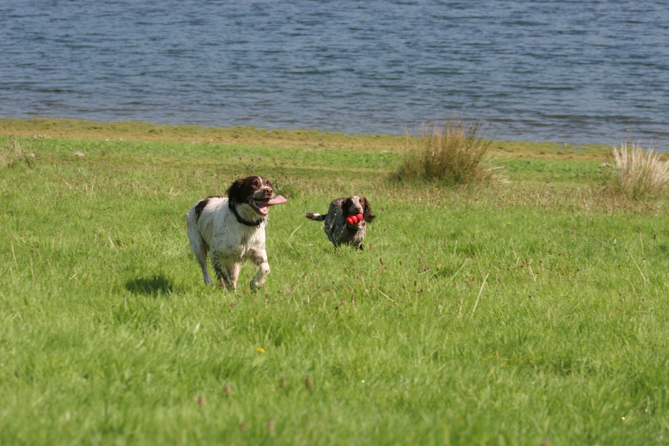[et_pb_section bb_built=”1″][et_pb_row][et_pb_column type=”4_4″][et_pb_text _builder_version=”3.17.6″]
With the start of the season upon us, how prepared is your dog? Here are some top tips to help your dog get in top shape.
[/et_pb_text][/et_pb_column][/et_pb_row][et_pb_row _builder_version=”3.17.6″ custom_css_main_element=”border-top:1px solid #e5e5e5;||border-bottom:1px solid #e5e5e5;”][et_pb_column type=”4_4″][et_pb_text _builder_version=”3.17.6″]
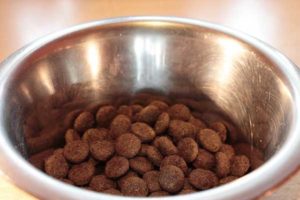 1. Review your dog’s diet
1. Review your dog’s diet
Over the summer your dog will have had plenty of time to rest, but inevitably this means a loss of fitness and potentially weight gain. A good diet is essential if you are expecting peak physical performance from your dog! Look for dog food that offers higher protein and fat levels to improve muscle repair and energy supply. BASC’s gundog partner, Skinners has a nutrition team ready to offer advice tailored to your dog’s diet and its individual requirements – call 01379 384247.
[/et_pb_text][/et_pb_column][/et_pb_row][et_pb_row _builder_version=”3.17.6″ custom_css_main_element=”border-bottom:1px solid #e5e5e5;”][et_pb_column type=”4_4″][et_pb_text _builder_version=”3.17.6″]
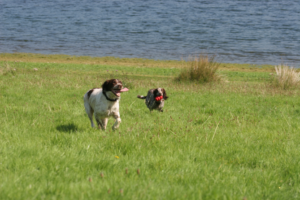 2. Exercise and get moving
2. Exercise and get moving
Just a few extra pounds can massively increase the force on your dogs’ joints, increasingly the risk of injury. For older dogs suffering from arthritis, weight loss can significantly improve their mobility. Keep your dog’s fitness level at its peak by taking them for regular walks and increase the time and distance as the season draws closer.
[/et_pb_text][/et_pb_column][/et_pb_row][et_pb_row _builder_version=”3.17.6″ custom_css_main_element=”border-top:1px solid #e5e5e5;||border-bottom:1px solid #e5e5e5;”][et_pb_column type=”4_4″][et_pb_text _builder_version=”3.17.6″]
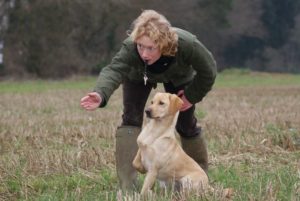 3. Training classes
3. Training classes
As with athletes, training improves muscle strength and cardiovascular performance. Gundog clubs frequently offer training classes over the summer; failing that you can create your own simulated hunting and retrieving activities either by yourself or with a group of friends. This will help tailor your dog’s skills more than just a walk. Renown dog author, Janet Menzie has written a number of blogs for BASC on dog training including quartering, positive reinforcement and pulling on the lead.
[/et_pb_text][/et_pb_column][/et_pb_row][et_pb_row _builder_version=”3.17.6″ custom_css_main_element=”border-bottom:1px solid #e5e5e5;”][et_pb_column type=”4_4″][et_pb_text _builder_version=”3.17.6″]
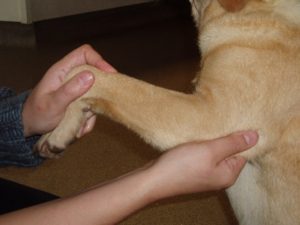 4. Health check at home
4. Health check at home
The mouth is a particularly important area. Loose teeth, excess tartar and redness of the gums can all contribute to discomfort which a dog will often conceal. Examine ears for excess wax, redness and irritation and check eyes for any evidence of discharge or clouding. Flex and extend all joints, feel for any resistance to manipulation which could indicate discomfort. Inspect the feet, look at the length of the nails and look between the toes, especially on the underside of the pads, for discolouration or any abnormal smell. Check the dog all over for any lumps or bumps and end by checking the tip of the tail for damage, particularly if the dog was worked hard last season.
[/et_pb_text][/et_pb_column][/et_pb_row][et_pb_row _builder_version=”3.17.6″ custom_css_main_element=”border-bottom:1px solid #e5e5e5;”][et_pb_column type=”4_4″][et_pb_text _builder_version=”3.17.6″]
 5. Vet MOT
5. Vet MOT
If you are worried about anything or just want peace of mind, make an appointment with your vet for a health MOT. They will be able to check your dog’s heart and lungs and remember to raise any concerns which your home examination may have thrown up.
[/et_pb_text][/et_pb_column][/et_pb_row][et_pb_row _builder_version=”3.17.6″ custom_css_main_element=”border-bottom:1px solid #e5e5e5;”][et_pb_column type=”4_4″][et_pb_text _builder_version=”3.17.6″]
 6. Vaccination
6. Vaccination
Make sure your dog’s vaccinations are all up to date. Agria Senior Veterinary advisor, Robin Hargreaves BVSc MRCVS, says “vaccination is the critical part of preventative medicine.” Speak to your vet if you’re unsure on what vaccinations your dog needs.
[/et_pb_text][/et_pb_column][/et_pb_row][et_pb_row _builder_version=”3.17.6″ custom_css_main_element=”border-bottom:1px solid #e5e5e5;”][et_pb_column type=”4_4″][et_pb_text _builder_version=”3.17.6″]
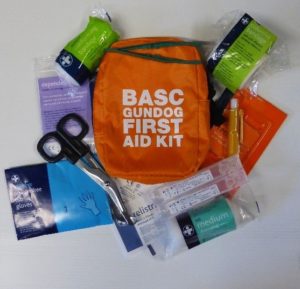 7. Doggy first aid kit
7. Doggy first aid kit
It’s a good idea to a carry a gundog first aid kit. Many people will carry a light selection of bits in their bag or pocket and then keep a more comprehensive kit at home or in their vehicle. Things to include are; dressings, wound flush, gloves, etc. You can also purchase the BASC first aid kit which includes everything you need here.
[/et_pb_text][/et_pb_column][/et_pb_row][et_pb_row _builder_version=”3.17.6″ custom_css_main_element=”border-bottom:1px solid #e5e5e5;”][et_pb_column type=”4_4″][et_pb_text _builder_version=”3.17.6″]
 8. Prepare your own equipment
8. Prepare your own equipment
Just like you would prepare your kit for yourself, don’t forget to think about what your dog might need. Keep your dog hydrated with spare water bottles or specific nutrient bars. Be prepared for a change in the weather by carrying a fleece or consider a spare blanket. Remember when you get back to your car your order of jobs is: dog; gun; then you.
[/et_pb_text][/et_pb_column][/et_pb_row][et_pb_row _builder_version=”3.17.6″ custom_css_main_element=”border-bottom:1px solid #e5e5e5;”][et_pb_column type=”4_4″][et_pb_text _builder_version=”3.17.6″]
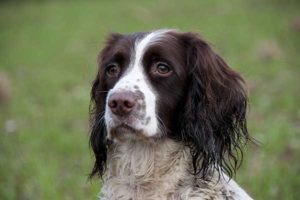 9. Insurance
9. Insurance
Dog specific insurance helps spread the cost in case of emergency and gives you that piece of mind. BASC insurance partner, Agria said: “working dog insurance comes as standard as part of your BASC dog insurance policy. Not only will they be insured at home, but also when out working. We are passionate about a lifetime of care for all animals working, retired or pets, so that’s why at Agria we believe its lifetime, every time”.
[/et_pb_text][/et_pb_column][/et_pb_row][et_pb_row _builder_version=”3.17.6″ custom_css_main_element=”border-bottom:1px solid #e5e5e5;”][et_pb_column type=”4_4″][et_pb_text _builder_version=”3.17.6″]
 10. Be organised
10. Be organised
Last but not at all least, is being organised. Work out where you need to be and how many times you are out. Don’t forget to include adequate rest days for your dog in between.
[/et_pb_text][/et_pb_column][/et_pb_row][/et_pb_section]
